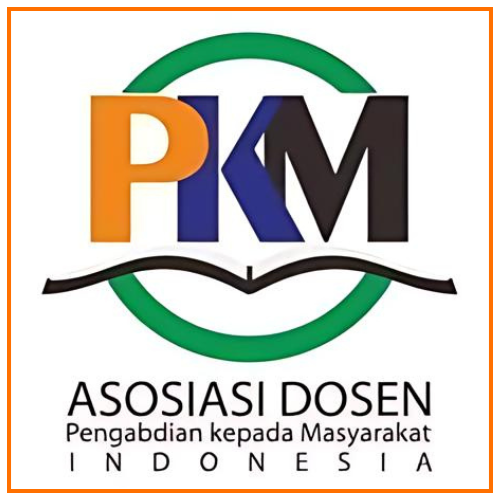Voicing the Students' Need of English Vocabulary English for Specific Purposes in Vocational High School
Abstract
Keywords: English for Specific Purposes; English Vocabulary; Voicing; Students’ Need; Vocational High School.
Full Text:
PDFReferences
Abdulfatteh. (2016). Students' Perceptions of ESP Courses: The Case of the Preparatory Institute for Engineering Studies of Monastir Tunisia. International Journal of English Language Teaching, 2016, 4(6): 1-12, 2.
Adhabiyyah, R., & Mahanum, M. (2012). Need Analysis and Material Development in English for Specific Purpose in Relation to English for Islamic Studies. Malaysia: ELT Journal, pp. 106-116, 110.
Al-Khasawneh. (2012). Vocabulary Learning Strategies: A Case of Jordan University of Science and Technology. English for Specific Purposes World, 12(32), pp. 1-15, 2.
Alsamdani. (2017). Need Analysis in ESP Context: Saudi Engineering Students as a Case Study. (Alsamdani, Penyunt.) Advances in Language and Literacy Studies. 8(6): 58-68, 8 (6), 58.
Ali, H & Salih, A.R.A. (2013). Perceived Views of Language Teachers on the Use of Need Analysis in ESP Materials Writing. UK: English Language Teaching, 6(3), pp. 11-19, 12.
Alqahtani M. (2015). The Importance of Vocabulary in Language Learning and How to be Taught. International Journal of Teaching and Education, 21.
Ansarey D. (2016). A Study on English Teaching Standard in Four Agricultural Universities in Bangladesh. The Agriculturist 14(1): 142-150 (2016) , 142-150 .
Basturkmen. (2010). Developing Courses in English for Specific Purposes. New York: PALGRAVE MACMILLAN.
Baxter & Jack. (2008). Qualitative Case Study Methodology: Study Design and Implementation for Novice Researchers. The Qualitative Report, Vol.13 no.4, 544.
Brown. (2016). Introducing Need Analysis and English Specific Purpose. New York: Routledge.
Braun & Clarke. (2006). Using Thematic analysis in psychology. Qualitative Research in Psychology,2006, 3(2),pp.77-1-41 , 6.
Creswell. (2012). Research Design Qualitative, Quantitative, and Mixed Method Approaches. London: SAGE Publication Ltd.
Coexhead, A. (2013). Vocabulary and ESP. In B.Paltridge & S. Starfield (Eds). The Handbook of English for Specific Purpose. West Sussex: John Wiley & Sons, Inc.
Dr.Hasan, W. et al. (2019). Conducting Need Analysis for an English for Specific Purpose Course for Agricultural Sciences. Linguistics Forum, 1(1), pp. 1-13 November 2019, 2.
Duddley-Evans T & John M. (2009). Development in English for Specific Purpose: A Multidisciplinary Approach. New York: Cambridge: CUP.
Etikan et al. (2016). Comparison of Convenience Sampling and Purposive Sampling. American Journal of Theoretical and Applied Statistics, 2016, 5(1): 1-4, 2.
Farrel. (2016, May 22). Open-Ended vs Close-ended Questions in User Research. Dipetik May 22, 2016, dari Nielsen Norman Group: www.nngroup.com.
Fleck et al. (2014). Youtube in Classroom: Helpful Tips and Students Perceptions. The Journal of Effective Teaching, Vol 14., No.3, 2014. pp. 21-37, 23.
Gay, R.L et al. (2006). Education Research: Competencies for Analysis and Applications. Florida: Pearson.
Gong, Y. (2012). Application of Multimedia to ESP Teaching in Vocational.
Huhta, M. et al. (2013). Need Analysis for Language Course Design: A Holistic Approach to ESP. Cambridge: Cambridge University Press.
Hui. (2017). Learning Need Analysis of English Specific Purposes (ESP) in Collage. US-China Foreign Language,2017, 15(1): 1-6, 2.
Jong; Kim. (2016). Using Needs Analysis to Develop English Teaching Materials in Initial Speaking Skills for Indonesian College Students of English.
McLeod. (2018). Questionnaire: Definition, Examples, Design, and Types. Retrieved 2018, from Simplypsyhology.org.: http://www.simplypsychology.org/questionnaires.html.
Matheson, R. (2010). English for Agribusiness and Agriculture in Higher Education Studies. Southern Court: Garnet Publishing Ltd.
Mohammadi, V.; Mousavi, N. (2013). Analyzing Need Analysis in ESP: A (re) Modeling. International Research Journal of Applied and Basic Science, 4(5), pp.1014-1020, 1015.
Niemiec, J. (2016). Need Analysis For a Specialized Learner Population: A Case Study of Learners Fram Medical College. Panstwo i Spoleczenstwo , 2016, 26(3), pp 72-84 , 75.
Pathak & Intratat. (2012). Use of Semi-Structured Interview to Investigate Teacher Perceptions of Students Collaboration. Malaysian Journal of ELT Research, 8(1): 1-10, 4.
Plesca. (2018). The Essence of English for Specific Purposes. Conferinta Stiintifica International Perspectivele si Problemele Integrarii in Spatiul European al Certerarii si Educatiel, 2016, Vol. 6 , 529.
Rata, G. et al. (2012). Agricultural English. Newcastle: Cambridge scholars Publishing.
Sincer, H. (2017). Inquiring What to Teach and How to Teach in EVP Classes: A General Overview on English Teaching for Vocational Purposes in Turkey. International Journal of Curriculum and instruction, 2017. 9(2), pp. 39-48, 40.
Sincer, H. (2017). Inquiring What to Teach and How to Teach in EVP Classes: A General Overview on English Teaching for Vocational Purpose in Turkey. International Journal of Curriculum and Instruction 9(2) 2017 p.39-48, 41.
Sonmez H. (2019). An Examination of Need Analysis Research in the Language Education Process. International Journal of Education & Literacy Studies, 8 - 9.
Tseng, Min-chen. (2014). Language Need Analysis for Taiwanese Arts Students: What Do Young Artists Need to Know? Taiwan: Journal of Arts, Science & Commerce, 5(1), pp. 1-36, 26 &27.
Tudor O. (2018). Vocabulary Acquisition in ESP. Perspectives, Strategies, and Resources. Studi si certerari filologice. Seria Lambi Straine Aplicate , 172.
Veranita D; Syahrial; Koto I. (2017). English for Agriculture Vocational School Students: A Need Analysis Study at SMK Negeri 2 South Bengkulu. Journal of Applied Linguistics and Literature, Vol 2 No.2, June 2017, pp.76-87, 76-87.
Watchaninrat D; Fathiyyah. (2016). English Learning Development of Agricultural Students in an Agricultural Machinery Course. International Journal of GEOMATE, Dec. 2016, Voll.11, Issue 28, pp.2820-2823, 2820-2823.
DOI: https://doi.org/10.37058/jelita.v1i1.4440
Refbacks
- There are currently no refbacks.








Journal of Education, Language Innovation, and Applied Linguistics
Lembaga Penelitian, Pengabdian Kepada Masyarakat dan Penjaminan Mutu Pendidikan (LP2M-PMP) Universitas Siliwangi
Jalan Siliwangi Number 24, Kota Tasikmalaya - 46115
West Java, Indonesia










